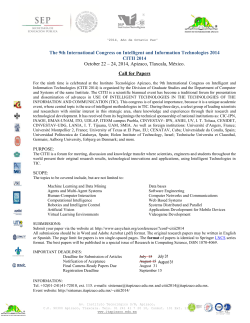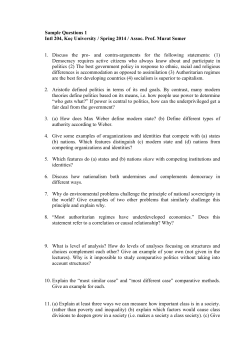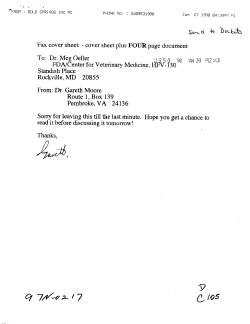
Document 329334
Sherif et al. Cancer Imaging 2014, 14(Suppl 1):P26 http://www.cancerimagingjournal.com/content/14/S1/P26 POSTER PRESENTATION Open Access Relative time-intensity curve: a new method to differentiate benign and malignant lesions on breast MRI H Sherif, A Mahfouz, A Kambal, A Sayedin*, I Mujeeb From International Cancer Imaging Society (ICIS) 14th Annual Teaching Course Heidelberg, Germany. 9-11 October 2014 Purpose Benign/malignant overlap exists on time-intensity curve (TIC) of dynamic gadolinium-enhanced breast MRI. This study presents a new method for TIC generation to decrease overlap and improve accuracy. Material and methods MR images of 100 patients with enhancing breast lesions (64 malignant, 36 benign) obtained before and repeatedly after intravenous injection of Gd-DOTA were evaluated. Signal intensity of lesions (SIlesion) and breast (SIbreast) were measured and TIC obtained. Relative signal intensity of the lesion was calculated as (SIlesion-SIbreast)/SIbreast and plotted versus time to obtain relative TIC. Four parameters were evaluated for diagnosis of carcinoma: peak enhancement (PE), initial enhancement slope (S), time-topeak (TTP), and washout ratio (WO). Comparison of parameter performance on TIC and relative TIC has been done by the Student’s T test and the Receiver-Operator Curve (ROC) analysis. Results On TIC, TTP has been the only discriminating factor. When threshold for carcinoma has been set at TTP≤2 min, sensitivity, specificity, positive predictive value, negative predictive value, and accuracy have been 36, 100, 100, 43, and 57% respectively. On relative TIC, accuracy of TTP has increased to 89%. Area under the ROC curve for TTP has improved from 0.77 for TIC to 0.86 for relative TIC (p<0.05). WO ratio has become a second discriminating factor on relative TIC with more washout in malignant lesions (WO=41±32) than benign * Correspondence: Asayedin0@gmail.com Hamad Medical Corporation, Doha, Qatar lesions (WO= 11±19) (p <0.05). PE and S were not statistically significant on TIC or relative TIC. Conclusion The use of relative TIC improves the discrimination of benign and malignant breast lesions. Published: 9 October 2014 doi:10.1186/1470-7330-14-S1-P26 Cite this article as: Sherif et al.: Relative time-intensity curve: a new method to differentiate benign and malignant lesions on breast MRI. Cancer Imaging 2014 14(Suppl 1):P26. Submit your next manuscript to BioMed Central and take full advantage of: • Convenient online submission • Thorough peer review • No space constraints or color figure charges • Immediate publication on acceptance • Inclusion in PubMed, CAS, Scopus and Google Scholar • Research which is freely available for redistribution Submit your manuscript at www.biomedcentral.com/submit © 2014 Sherif et al; licensee BioMed Central Ltd. This is an Open Access article distributed under the terms of the Creative Commons Attribution License (http://creativecommons.org/licenses/by/4.0), which permits unrestricted use, distribution, and reproduction in any medium, provided the original work is properly cited. The Creative Commons Public Domain Dedication waiver (http://creativecommons.org/publicdomain/zero/1.0/) applies to the data made available in this article, unless otherwise stated.
© Copyright 2025














